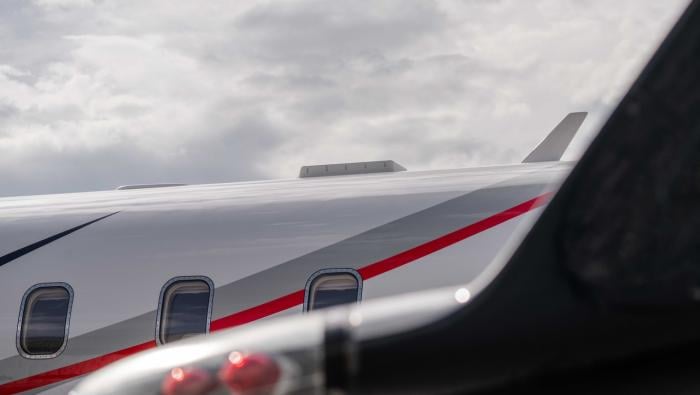Software and information service provider ATP and Flightdocs have integrated their products, allowing users to access technical publications and regulatory information directly from the Flightdocs maintenance-tracking platform. ATP purchased Flightdocs in June, and the merged companies’ product development team has been working on the integration since then.
“The main concept is if someone is in Flightdocs, they can link to get technical publications and regulatory content from the ATP Aviation Hub to perform that maintenance,” said ATP CEO Rick Noble. “The mission is to try and make things easier and more efficient for customers, with less time looking for information.”
ATP’s Aviation Hub now provides users with access to more than 1,700 technical publications from 90 original equipment manufacturers (OEMs), in addition to FAA and EASA regulatory documents. The ATP team adds more than 2,000 pages per day to the Hub.
Before the integration, a technician preparing for maintenance by going over a due list in Flightdocs would have had to switch to ATP to look up the technical information for the tasks. Now users can access all the necessary information directly from Flightdocs, which eliminates those extra steps.
The integration philosophy fits with ATP’s original strategy, Noble explained. “The goal is to put all the content [from OEMs] together so if you’re working on an aircraft from the propeller to avionics to wheels and brakes, all the content is in one spot.” Flightdocs and ATP users can access the Aviation Hub and Flightdocs platform on PCs or mobile devices. “Increasingly, people want to move around the hangar and not be tied to a desk,” he said. In locations where internet access isn’t available at the aircraft, users can download the Aviation Hub content and work offline.
"We continue to invest heavily in the evolution of the products we're delivering to aircraft owners, operators, and OEMs," said Greg Heine, chief strategy officer at ATP. "The merger of ATP and Flightdocs just a few months ago strengthened our ability to develop new products, features, and integrations across all of our platforms. We're excited about this new launch and have numerous major releases planned over the next year."
ATP owner ParkerGale and Accel-KKR joined to make the Flighdocs acquisition in June. After buying ATP in 2015, ParkerGale purchased CaseBank Technologies a year later and merged it with ATP. “We have been trying to convince Flightdocs’ owners to join the ATP family for a few years, and we are so pleased to have finally put the companies together,” said ParkerGale co-founder and ATP board chairman Devin Mathews. “We have ambitious plans for ATP as one of the largest aviation software companies and we are excited to have Accel-KKR’s support in the endeavor.”
Flightdocs adds a significant base of business aviation customers to ATP’s portfolio, which also includes airline and military segments, although the Aviation Hub does serve many business and general aviation operators. “We’re always on the lookout for companies that might augment our product line,” said Noble. “Flightdocs is a perfect example. There are many synergies between the two companies.”
Although the former CaseBank’s ChronicX defect-detection software has mostly airline customers, ATP has demonstrated it to the military. Before the pandemic, ATP had roughly 5,000 commercial aircraft signed up for ChronicX, about 25 percent of the free world’s fleet. The drop in airline activity due to the Covid pandemic has lowered ATP’s airline income, but that wasn’t a huge percentage of the company’s revenue base, according to Noble. “We’re fortunate to have a portfolio of customers in various segments but also that business and general aviation has been less impacted than commercial and has come back strongly.”
That said, ATP is looking at offering ChronicX to aircraft manufacturers and possibly adding it to Flighdocs, to help operators that use Flightdocs realize the savings available from solving problems before they cause an AOG. Although, he said, “Those aircraft don’t tend to be used as much as commercial airlines, we think the same dynamics are in play and the same potential savings and return on investment will be there.”
ATP’s other CaseBank product is the SpotLight troubleshooting diagnostic database, which already has penetrated the business aviation market with customers such as Pratt & Whitney and Gulfstream. After signing up, ATP helps the customer populate the underlying diagnostic database, then when users encounter a problem, they type in the symptoms and are given likely potential solutions.
Noble would like to see the SpotLight service expand into more business aviation and airline aircraft, including King Air turboprops and Boeing 737s. SpotLight works better when there is a larger population of a particular aircraft type.
Meanwhile, ATP is working to add more OEMs to the Aviation Hub so that users don’t have to go elsewhere for maintenance information. As Noble explained, ATP’s specialty is organizing and publishing complicated information that needs to be updated regularly. “The OEMs that use us exclusively focus on designing quality aircraft and leave publication distribution to us,” he said. “Our specialty is managing publications, taking customer service calls, updating regulatory content, and billing customers. Many OEMs are happy to not take that on.”
As for Flightdocs, plans are underway to add enhancements to the software to allow aircraft and flight crew scheduling, which would help operators better manage crew and aircraft availability. “We’re also looking at building in additional features and functions to make it much more useful to MROs,” he said. This could include allowing a maintenance provider to manage Flightdocs accounts for aircraft it doesn’t operate—for example, maintenance tracking for a customer’s fleet or even individual aircraft. Invoicing could be added at some point, although that adds more complexity in terms of integrating with financial software, Noble admitted.
After acquiring CaseBank and Flightdocs, ATP now employs more than 200 people in four locations, although many are currently working remotely due to the pandemic. There are about 7,500 customers in 137 countries operating 140,000 aircraft that use one or more of ATP’s software products, according to Noble.







